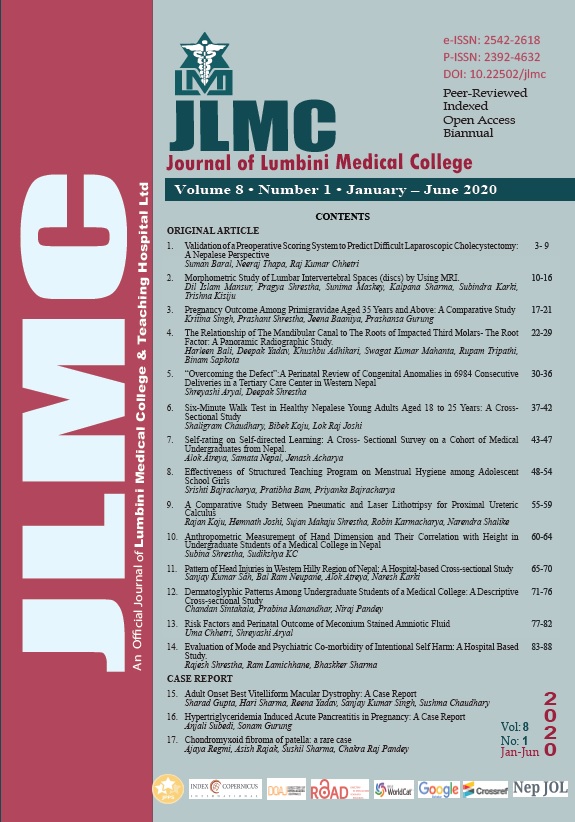Principles, Utility and Limitations of Pulse Oximetry in Management of COVID-19
Keywords:
COVID-19, Limitations, Nepal, Pulse oximetry, UtilityAbstract
Pulse oximetry is an essential component of the standard care of COVID-19 patients. In the context of the spreading COVID-19 pandemic for which no targeted therapy or vaccines are yet available, early identification of the severe cases or cases with high risk of severe disease and appropriate supportive treatment are of paramount importance to save lives. Pulse oximetry is a cheap, fast, easy to use, noninvasive, painless and accurate tool that allows real-time monitoring of hypoxemia. As the primary target of the disease is the respiratory system pulse oximetry provides an unparalleled way to assess the severity of the disease, guide supportive therapies and monitor the clinical status and response to treatment with greater benefits in the low-resource settings. All settings from the quarantine facilities at the ground level to the ICUs in the highest level hospitals can utilize it to achieve their goals. To get the best of this tool, it needs to be used properly and the findings interpreted carefully. Role of basic understanding of the physiological principles and technology behind its use and awareness of its limitations cannot be overemphasized. The pulse oximetry readings are interpreted in the context of blood hemoglobin concentration, tissue perfusion, arterial blood carbon dioxide concentration and oxygen supplementation status.
Downloads
Downloads
Published
How to Cite
Issue
Section
License
Copyright (c) 2020 Lok Raj Joshi

This work is licensed under a Creative Commons Attribution 4.0 International License.
The Journal of Lumbini Medical College (JLMC) publishes open access articles under the terms of the Creative Commons Attribution(CC BY) License which permits use, distribution and reproduction in any medium, provided the original work is properly cited.JLMC requires an exclusive licence allowing to publish the article in print and online.
The corresponding author should read and agree to the following statement before submission of the manuscript for publication,
License agreement
In submitting an article to Journal of Lumbini Medical College (JLMC) I certify that:
- I am authorized by my co-authors to enter into these arrangements.
- I warrant, on behalf of myself and my co-authors, that:
- the article is original, has not been formally published in any other peer-reviewed journal, is not under consideration by any other journal and does not infringe any existing copyright or any other third party rights;
- I am/we are the sole author(s) of the article and have full authority to enter into this agreement and in granting rights to JLMC are not in breach of any other obligation;
- the article contains nothing that is unlawful, libellous, or which would, if published, constitute a breach of contract or of confidence or of commitment given to secrecy;
- I/we have taken due care to ensure the integrity of the article. To my/our - and currently accepted scientific - knowledge all statements contained in it purporting to be facts are true and any formula or instruction contained in the article will not, if followed accurately, cause any injury, illness or damage to the user.
- I, and all co-authors, agree that the article, if editorially accepted for publication, shall be licensed under the Creative Commons Attribution License 4.0. If the law requires that the article be published in the public domain, I/we will notify JLMC at the time of submission, and in such cases the article shall be released under the Creative Commons 1.0 Public Domain Dedication waiver. For the avoidance of doubt it is stated that sections 1 and 2 of this license agreement shall apply and prevail regardless of whether the article is published under Creative Commons Attribution License 4.0 or the Creative Commons 1.0 Public Domain Dedication waiver.
- I, and all co-authors, agree that, if the article is editorially accepted for publication in JLMC, data included in the article shall be made available under the Creative Commons 1.0 Public Domain Dedication waiver, unless otherwise stated. For the avoidance of doubt it is stated that sections 1, 2, and 3 of this license agreement shall apply and prevail.
Please visit Creative Commons web page for details of the terms.




